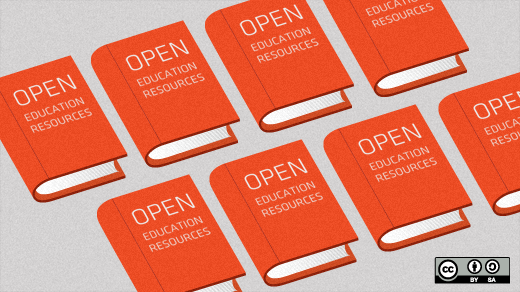The Golden Age of MOOCs is over and Why I hate Coursera · Stanley http://reachtarunhere.github.io/2016/06/11/Golden-Age-of-MOOCs-is-over-and-why-I-hate-Coursera
Online Course Report lists 50 most popular MOOCs of all time
Unlike regular college/ university courses, MOOCs can attract many thousands of enrollees around the world. They can come in the form of active course sessions with participant interaction, or as archived content for self-paced study. MOOCs can be free, or there can be a charge – either on a subscription basis or a one-time charge. Free MOOCs sometimes have a paid “verified certificate” option.
— The 50 Most Popular MOOCs of All Time http://www.onlinecoursereport.com/the-50-most-popular-moocs-of-all-time/
A good list, but be sure to read the caveats at the beginning and end.
Arizona State U ‘MOOCs for credit’ program faces unanswered accreditation questions | InsideHigherEd
Arizona State U ‘MOOCs for credit’ program faces unanswered accreditation questions | InsideHigherEd https://www.insidehighered.com/news/2015/04/24/arizona-state-u-moocs-credit-program-faces-unanswered-accreditation-questions
TechCrunch reminds us about what happened to that MOOC revolution
Three years ago this week, Sebastian Thrun recorded his Stanford class on Artificial Intelligence, released it online to a staggering 180,000 students, and started a “revolution in higher education.” Soon after, Coursera, Udacity and others promised free access to valuable content, supposedly delivering a disruptive solution that would solve massive student debt and a struggling economy. Since then, over 8 million students have enrolled in their courses.
This year, that revolution fizzled. Only half of those who signed up watched even one lecture, and only 4 percent stayed long enough to complete a course. Further, the audience for MOOCs already had college degrees so the promise of disrupting higher education failed to materialize. The MOOC providers argue that completion of free courses is the wrong measure of success, but even a controlled experiment run by San Jose State with paying students found the courses less effective than their old-school counterparts.
via The MOOC Revolution That Wasn’t | TechCrunch.
OK round up of where the MOOC thingy got to. Turns out that MOOCs where not the thing that disrupted higher education.
From The Front Lines: Peeking Inside a MOOC in Progress
For example, students have complained about not being able to complete in-video quizzes when they download the lecture videos. While our instructional team wanted to help them complete this work off-line—many students have very limited Internet access—we could not provide a way to do so. We pressed Coursera support-staff members for a solution, but they could not provide one.
…
My limited ability to make key pedagogical choices is the most frustrating aspect of teaching a MOOC. Because of the way the Coursera platform is constructed, such wide-ranging decisions have been hard-coded into the software—decisions that seem to have no educational rationale and that thwart the intent of our course.
via Inside a MOOC in Progress – Wired Campus – The Chronicle of Higher Education.
I suspect that this will not be the first time we hear from a MOOC faculty complaining about some sort of failure of the the tech platform. Something important here is that Coursera is commercial company and the platform is closed and proprietary. At least if this were an open platform like EdX or Canvas there would be a chance to add the features that the teachers need to educate their students as they see fit, not as some random engineer or developer tells them it needs to be done.
Because MOOCs Needed A Yelp, Here’s CourseTalk
Today, CourseTalk is what you might expect — a Yelp for MOOCs — a place for students to share their experiences with these courses and a way to discover new courses they’d enjoy. Still nascent, the platform’s design is simple and its user experience is straightforward. Visitors can sift through courses by “Top Rated,” “Popular” and “Upcoming” or by category, like Business, Computer Science, and so on.
When a space gets its own Yelp, it’s generally an indicator of the fact that a bunch of content or businesses came online at once (or at least it seems that way when viewed from 5 miles up) and end users have no way to make sense of that noise. Sure, there are a lot of schools and programs rushing to take advantage of MOOCs because it’s perceived as a novel technology (even though the MOOC concept has been developing for more than a few months) and because of the scale MOOCs afford.
Short term this site will help potential students sort through the loud, seemingly crowded MOOC field. Longer term the site or other like it may be in a position to be clearinghouses for quality on line courses.
A pedagogy of abundance or a pedagogy to support human beings? Participant support on massive open online courses | Kop | The International Review of Research in Open and Distance Learning
http://www.irrodl.org/index.php/irrodl/article/view/1041/2025
This paper examines how emergent technologies could influence the design of learning environments. It will pay particular attention to the roles of educators and learners in creating networked learning experiences on massive open online courses (MOOCs). The research shows that it is possible to move from a pedagogy of abundance to a pedagogy that supports human beings in their learning through the active creation of resources and learning places by both learners and course facilitators. This pedagogy is based on the building of connections, collaborations, and the exchange of resources between people, the building of a community of learners, and the harnessing of information flows on networks. This resonates with the notion of emergent learning as learning in which actors and system co-evolve within a MOOC and where the level of presence of actors on the MOOC influences learning outcomes.

